Design for Recyclability: What rPET Suppliers Wish Brands Knew
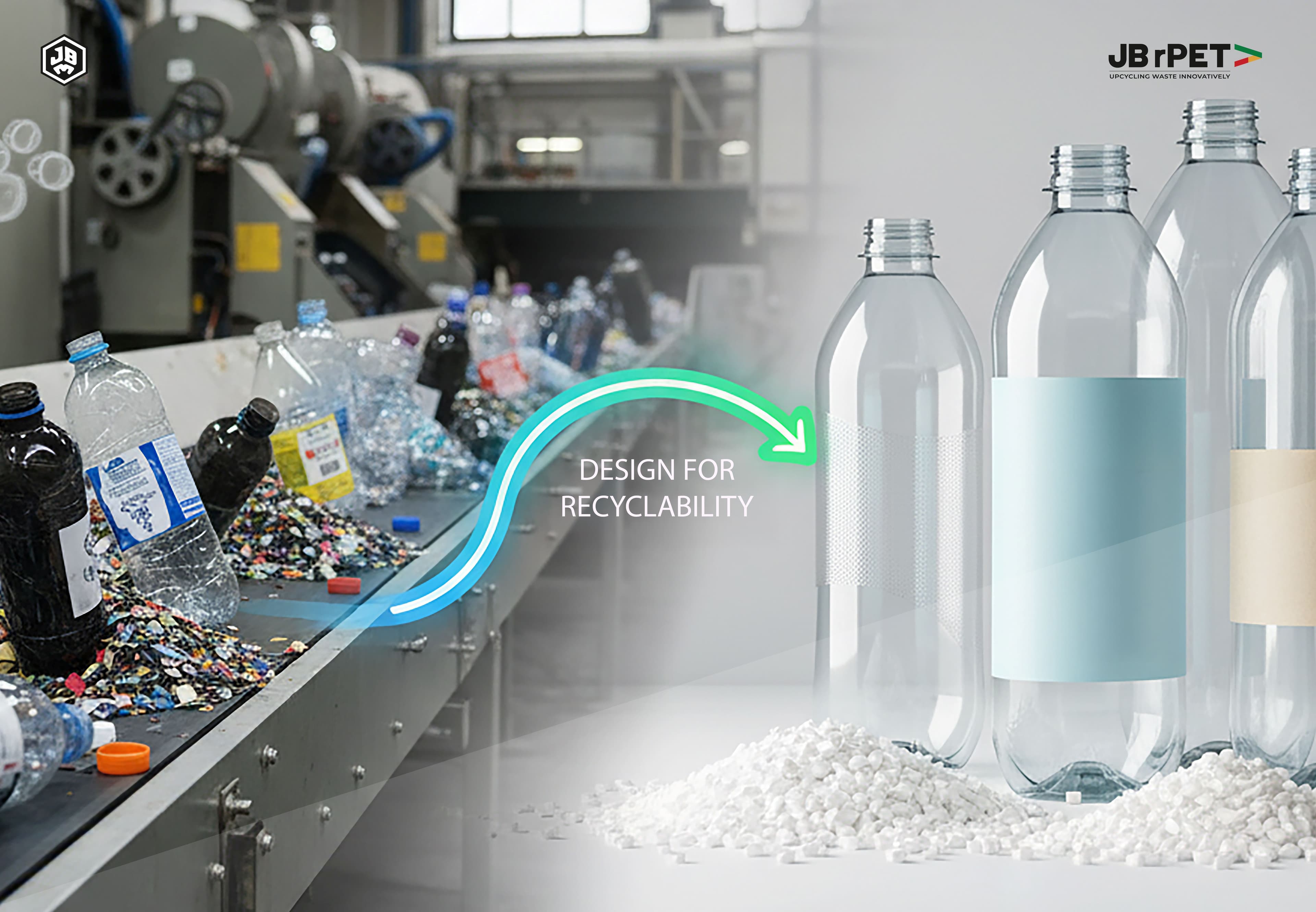
Packaging today is having its “make up your mind” moment. On one side, brands are being nudged to cut carbon, slash waste, and prove their green promises. On the other side, the recycling system is like a picky eater, it can only handle what it’s designed to digest. And the truth? Brands that don’t consider end-of-life recycling contribute to millions of tons of plastic waste entering landfi lls or oceans every year. This is why design for recyclability is no longer a “nice to have”, it’s a non-negotiable.
As recycled PET material suppliers, we at JB rPET have a front-row seat to the challenges of turning post-consumer packaging back into usable raw material. The fact is simple: small design decisions at the brand level can either facilitate high-quality recycling or send packaging to landfi lls and incineration facilities. Worse, they can usher in disingenuous recycling practices, where trash is sold as recycled but never actually re-circulates.
In this blog, we break down what brands need to know when working with rPET suppliers, why “design for recyclability” is the bridge between sustainability commitments and reality, and how design fl aws, from multilayer packaging recyclability issues to shrink sleeves recycling problems, create invisible barriers to a circular future.
Why Designing for Recyclability Matters
Packaging isn’t just about looking pretty on a shelf anymore, it’s about what happens after the shelf. You can promise “100% recyclable by 2030,” but if your design choices trip up recycling in the real world, that promise is just fancy wrapping on a broken system.
Think about it: PET itself isn’t the problem, bad design is. Multilayer laminates cannot be separated, and recycling streams are contaminated by non-recyclable dyes. However, when fi guring out recycling costs, packaging choices are frequently overlooked. The result? Industries lose millions in potential value, and the supply of high-quality rPET shrinks, while the recycling loop breaks.
For rPET packaging design tips, the principle is simple: the cleaner the input, the better the output. Every contaminant reduces yield. And in today’s world, with demand for rPET skyrocketing, ensuring a high yield of clean fl akes is critical for both cost effi ciency and environmental performance.
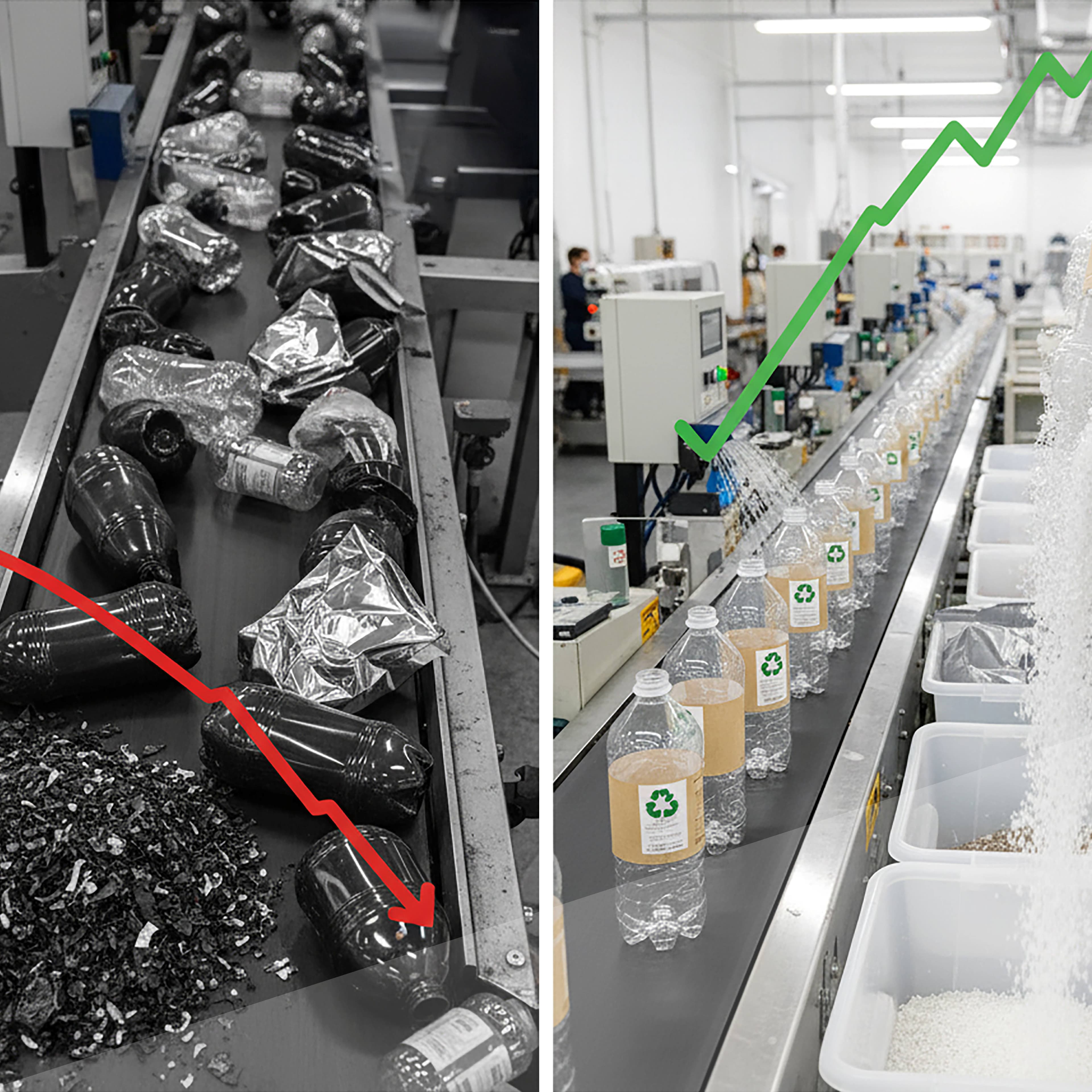
The Illusion of Recyclability
In case of a lack of design for recyclability, waste often ends up in the gray zone of “fake recycling.” Instead of being processed into usable mechanical or chemical recycled PET, it’s misclassifi ed, exported, or downcycled into low-value materials.
This practice doesn’t just harm the planet; it damages brand credibility. Investigations in global markets have revealed cases where brands claimed recycled content while the actual supply chain could not verify or trace it. If design for recyclability doesn’t happen, it ends up fueling a dangerous “ghost recycling” cycle, where waste is burned, misreported, or greenwashed, giving consumers the false comfort that their packaging is sustainable. On the other hand, packaging that’s truly recyclable can actually be recovered, traced, and reused, protecting not just the planet, but also the trust and credibility of the brand.
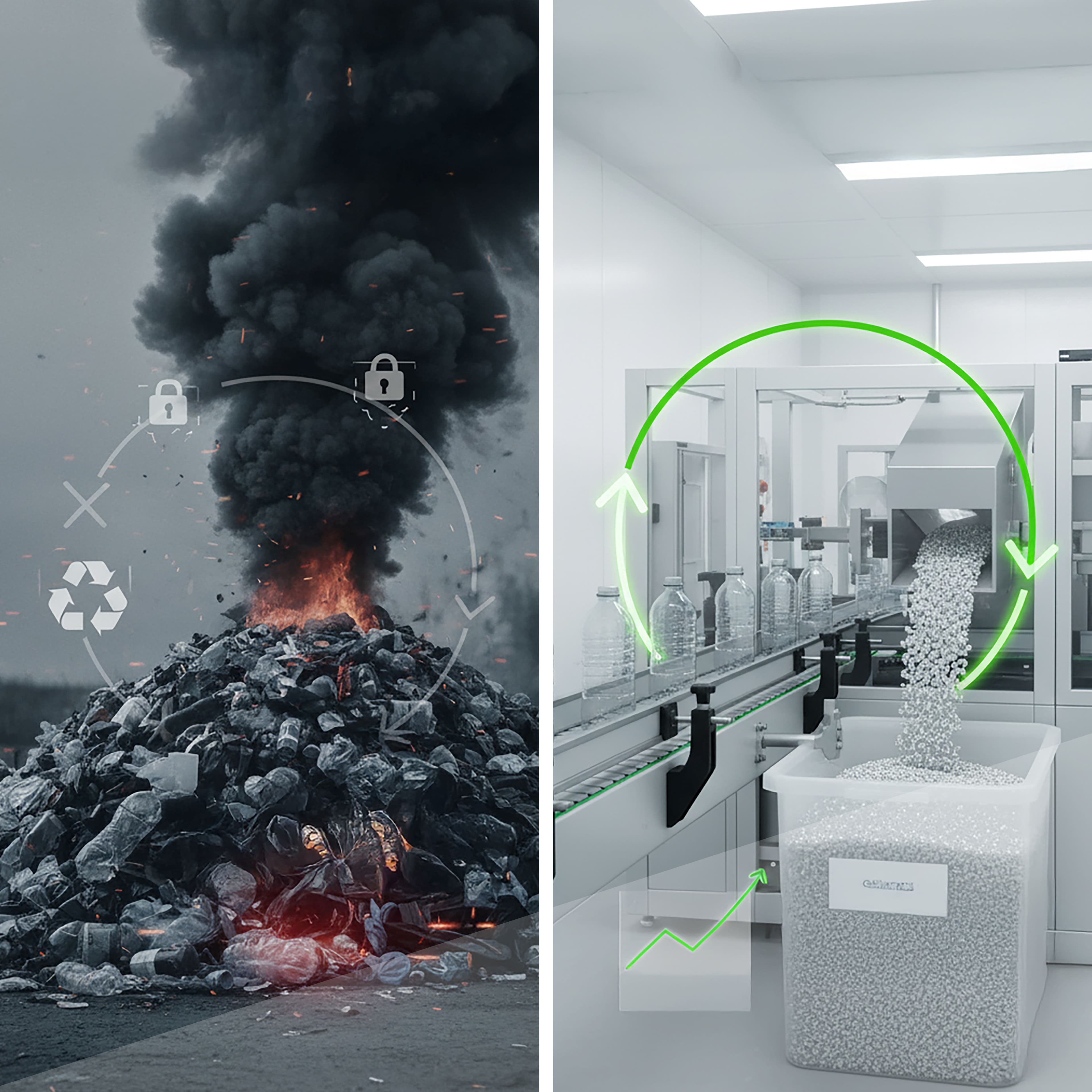
Key Design Barriers Brands Overlook
1. Multilayer Packaging Recyclability Issues
Multilayer laminates (PET/PE, PET/Al, etc.) are popular for their barrier properties, but they are one of the biggest culprits in recyclability failures. Recycling systems cannot easily separate layers bonded at the molecular level. What looks like “just a bottle or wrapper” to a consumer often ends up as residue in sorting facilities.
Design for recyclability tip: Whenever possible, opt for mono-material PET designs. Advances in coatings and lightweighting can offer barrier performance without compromising recyclability.
2. Non-Recyclable Dyes Impact Recyclability
Bright colours may draw attention to the packaging on shelves, but they drastically reduce the value of recycled output. Dark or opaque dyes, in particular, contaminate fl ake streams, making them unsuitable for food-grade applications.
Design for recyclability tip: Utilize clear or light PET. If branding requires strong hues, consider using removable labels instead of permanent dyes.
3. Shrink Sleeves Recycling Problems
Shrink sleeves have exploded in popularity as a 360° branding canvas. Unfortunately, they often cover up PET bottles so completely that optical sorters at MRFs (Material Recovery Facilities) can’t recognize them as PET. Worse, when made of PVC or other incompatible plastics, they contaminate the PET recycling stream.
Design for recyclability tip: Choose shrink sleeve materials that are compatible with PET recycling, and design sleeves with perforations to make removal easy. Clear windows or partial sleeves also help sorters identify PET bottles.
4. Adhesives and Labels
Not all adhesives melt during the recycling process. Wash-resistant adhesives make labels stick and deposit residues onto PET fl akes, lowering yield and quality.
Design for recyclability tip: Use water-soluble adhesives and removable labels that peel off cleanly under hot-wash processing.
Clean Flakes, Clear Wins
At JB rPET, one of our biggest asks from brands is to increase clean flake yield design. When bottles are easy to sort, labels peel away, and colours don’t contaminate, the system produces more usable rPET with less energy and fewer emissions. This isn’t just a technical win: better design directly reduces costs and lowers carbon impact.
Prioritising recyclability also prepares brands for tighter regulations: design choices will increasingly affect compliance expenses and brand reputation as EPR (Extended Producer Responsibility) frameworks expand across India and worldwide.
The Business Case for Recyclability
Why should brands care beyond compliance? Because design for recyclability is fast becoming a differentiator. Brands today face mounting pressure from consumers and retailers to prove their circularity claims. By using premium rPET made from truly recyclable packaging, they can hit recycled content goals, cut Scope 3 emissions, and back their sustainability story with real substance.
For recycled PET material suppliers and packaging partners, design-for-recyclability isn’t just good practice; it secures a steady, traceable stream of quality rPET, the backbone of a circular packaging economy.
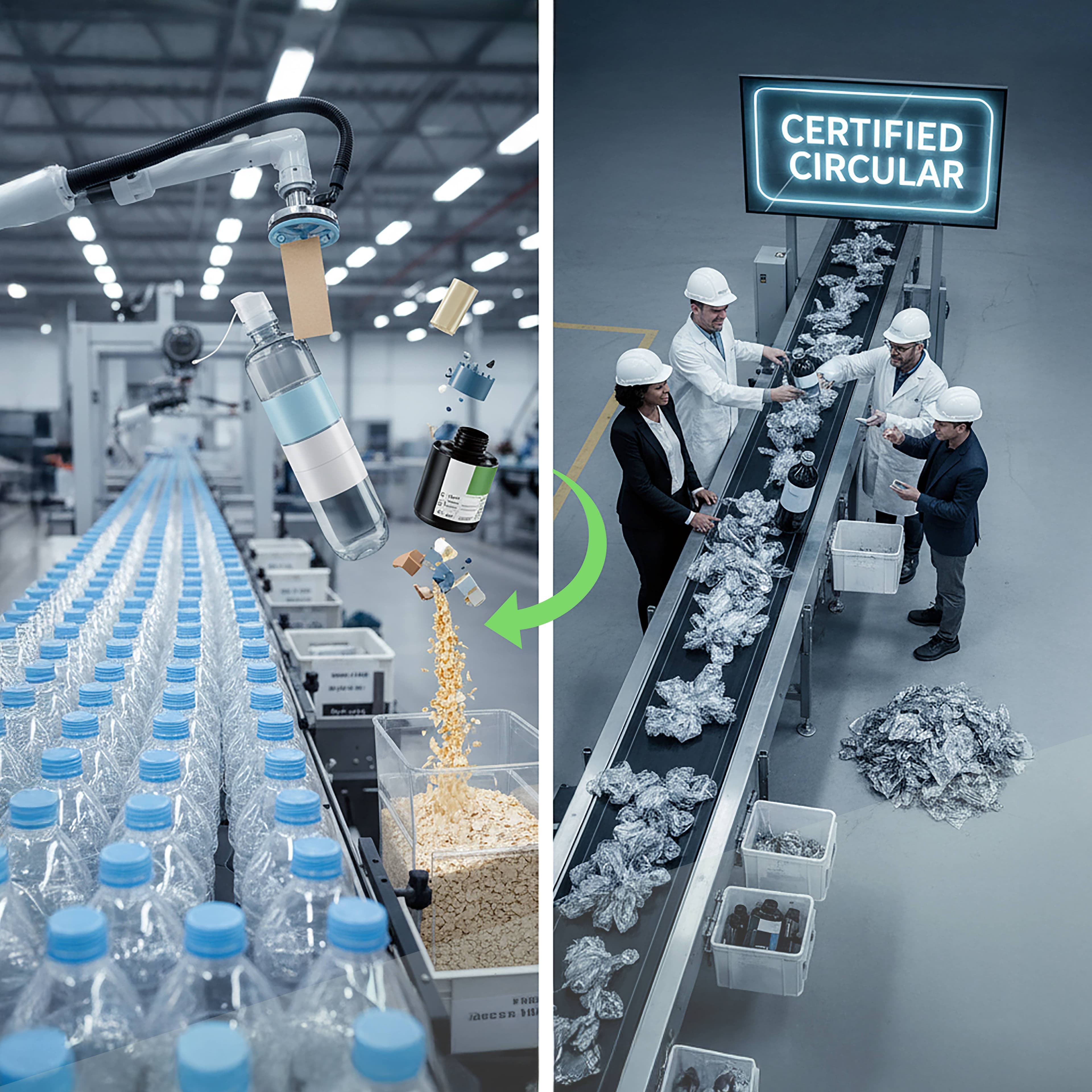
What JB rPET Wishes Brands Knew
At JB rPET, we see the real journey of packaging, beyond shelves and into recycling plants. And here’s the truth: not every “recyclable” design truly makes it through. If brands want their packaging to become high-quality rPET flakes, chips, and resins (not landfill), here’s what matters most:
1. Using compatible materials (such as HDPE caps on PET bottles) means each component of your product has a recycling route.
2. Recyclability equals yield. The easier your packaging is to recycle, the more high-quality rPET we can produce.
3. Lightweight ≠ recyclable. Thin plastics and fi lms can reduce material costs, but they jam recycling plants.
4. Design for disassembly. Products should be easy to break down into components. Complex assemblies make recovery expensive and ineffi cient.
5. Cooperation is essential. rPET and packaging material suppliers need to collaborate to make sure circularity is maintained from the beginning.
6. Circular proof is a brand differentiator. Show consumers and partners that your packaging isn’t just recyclable in theory, it’s truly closing the loop in practice.
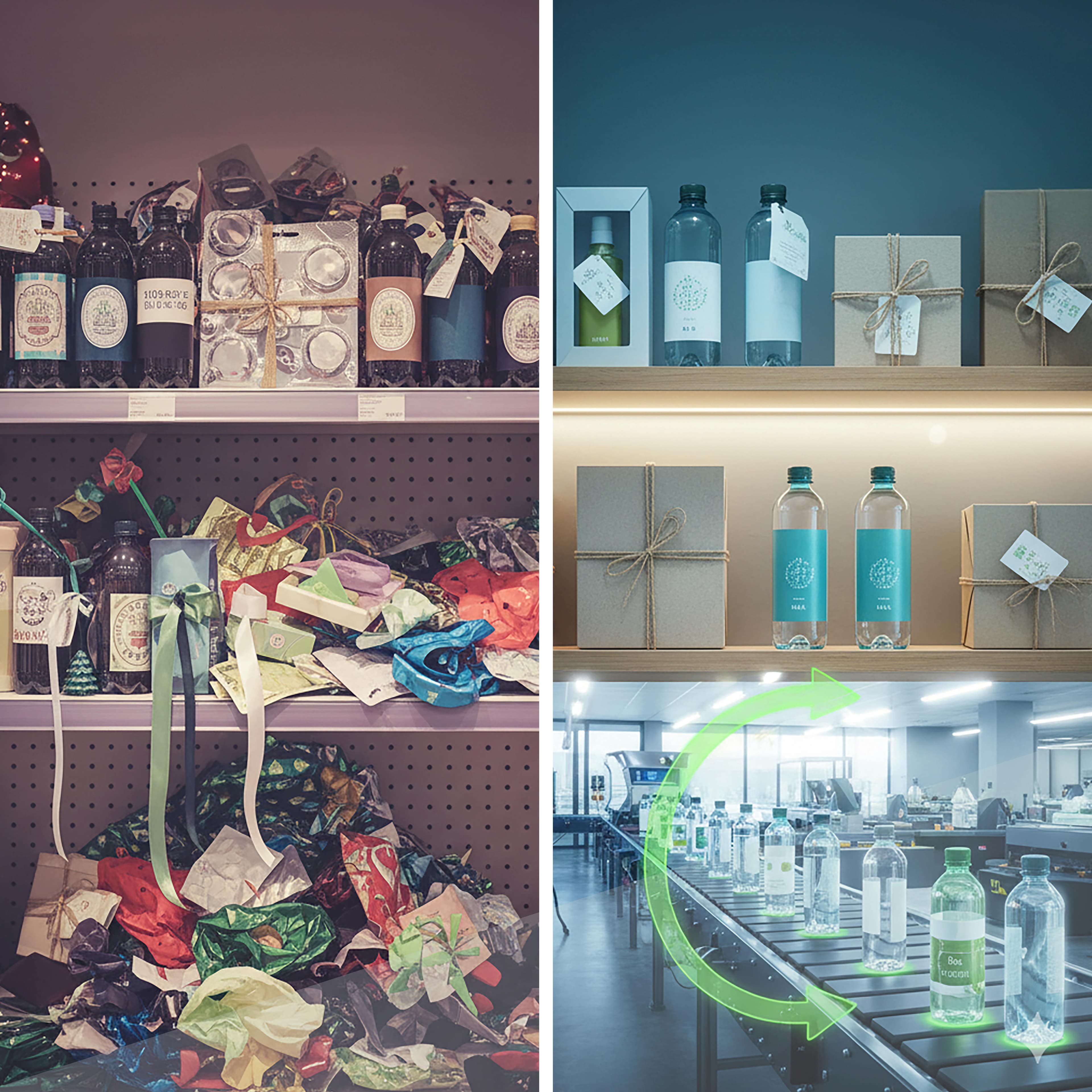
Seeing The Whole Picture
With the festive season on the horizon, brands face a defining choice: continue the age-old cycle of wasteful packaging, or become champions of change through true design for recyclability. As recycled PET material suppliers, we’re dedicated to helping brands design packaging that’s not only visually compelling but also fully recyclable.
We believe real innovation begins with consideration and ends with packaging ready to live again. For brands, designing for recyclability isn't a box to check: it's an opportunity to lead, to create enduring trust, and to unlock genuine circular effect. We call on partners to opt for clarity, simplicity, and certifi ed recycled material from day one, making each bottle or box simpler to recycle and more precious in the life cycle to come. The future is for brands that look at the whole picture, where products are created to be remade, not merely replaced. Let's create it together: one design, one recyclable pack, and one step forward for sustainability at a time. Our mission is to enable brands to make bold design decisions without sacrifi cing sustainability, so that any festive release or product launch can thrill shoppers while respecting the planet.